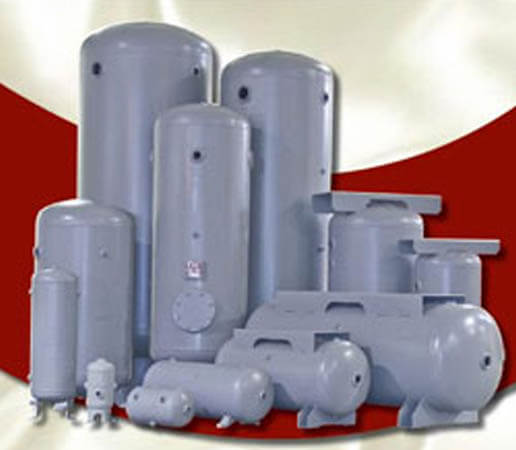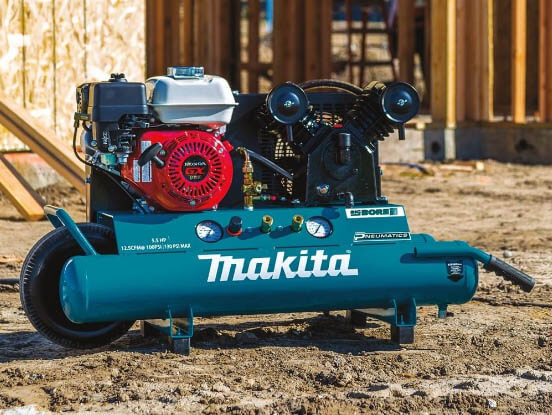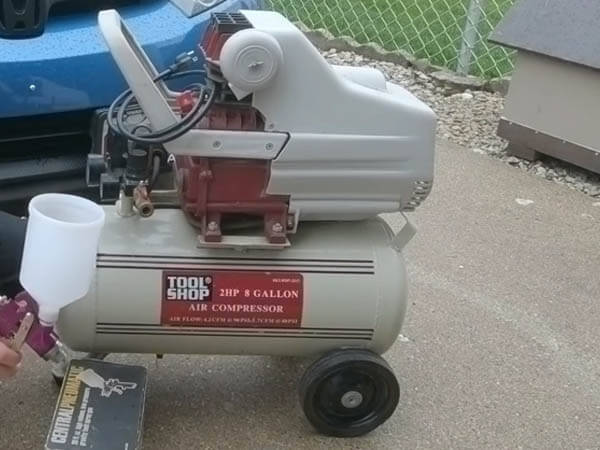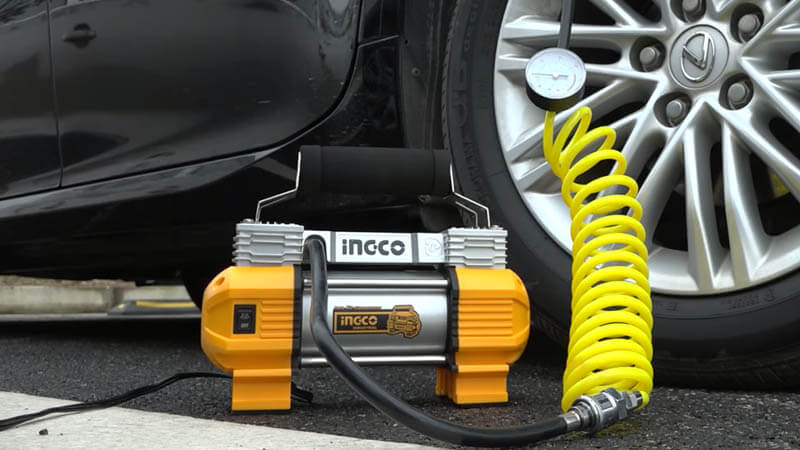An Air compressor is one of the compulsory tools for car painting. And to get professional results, it is necessary to understand which size of air compressor is suitable for painting a car.
However, there is no definite air compressor size for painting a car. All of it depends on the PSI and CMF requirements of the spray gun you will use for painting. Besides, you’ll also need to understand the intended configuration of the air compressor.
Moreover, for painting a car, the smallest tank size of an air compressor allowed is 60 gallons, and the lowest pressure allowed is 10 horsepower. Also, 14-18 CFM at 90 PSI is needed to paint a car with an air compressor. And, below you will get more detailed information about what size air compressor to paint a car?
Check it out!
Things to Consider for Determining the Size of An Air Compressor!
The size of the air compressor for car painting relies on several variables, including your vehicle’s size, type, and way of painting. Some other factors are covered below:
Tank size

For optimal productivity, it’s vital to have an air compressor with a large enough tank. When working on a big piece, like covering an entire vehicle, smaller tanks may need to be refilled, perhaps many times.
Additionally, the pressure and flow of the paint can vary more in smaller tanks, resulting in uneven coatings. Therefore, a large enough tank is crucial because of its constant power. When painting a car, you need a tank with enough space to maintain a steady stream of paint.
Coating an entire vehicle in a single pass without refilling is often possible with tanks with 60 gallons or more capacity. However, tanks with 50 gallons or higher capacity are preferred for car painting. So, don’t cut your painting session short to avoid dissatisfaction and subpar results.
CFM rating
Spray painting a car requires a CMF much greater than the average to break up the paint into tiny particles. The difference between a sloppy paint job and a professional one is the volume of air used to apply it.
In most cases, a greater, minimal (HVLP) compressor will do the job of painting a car. Try to find two-stage compressors that can produce nearly 20 CFM.
Air pressure
For painting a car with an air compressor, cubic feet per minute (CFM) is more important than pressure (PSI). However, achieving perfect atomization of the paint with higher CFM is more important than the pressure grade, which specifies how much pressure the paint is given from the nozzle.
A minimum of 15 psi, while greater pressures of 20 or 25 psi can be necessary for certain tasks like applying a clear coat.
Horsepower
The compressor with only 10 horsepower is sufficient for the typical auto painting task. However, compressors with a higher horsepower rating have the potential to be more flexible and effective.
Related: What is SCFM On an Air Compressor?
What Size Air Compressor Do I Need?

Knowing which spray gun, you will use is essential for selecting a compressor. You’ll need a compressor of a specific size proportional to the size of your spray gun. Considering the highest CFM and PSI values requirement of your spray gun, figure out the size of the air compressor you’ll need.
For a more efficient and secure operation, the recommended margin CFM is approximately 1.5 times the base CFM. Once the value is determined, you can find an appropriate air compressor.
Moreover, the horsepower output, cubic feet per minute, and pounds per square inch are more relevant than the actual size of an air compressor. In most cases, the horsepower of your compressor will directly correlate to the air compressor’s cubic feet per minute (CFM).
If your compressor’s horsepower is sufficient, you should not bother about running out of air before you finish a job. If you pay attention to the required CFMs and PSIs, you can choose a compressor that is a great fit for your spray gun.
The following chart details the typical CFM/PSI requirements of car spray guns:
| Sprayer | CFMs |
|---|---|
| Iwata LVLP | 16 |
| TCP Global Kit | 3.5 to 7.1 |
| DeVilbiss | 12 to 13 |
However, another crucial thing to think about in terms of air compressor size is whether you require a portable compressor or not. Opt for something lightweight and compact if you need to get things done while on the road. On the contrary, go for a more substantial model if you’re building a shop.
Air Pressure: PSI (Pounds per Square Inch)
When searching for the ideal air compressor, you should consider the required air pressure. Most buyers prefer gravity-fed LVLP or HVLP spray guns because of their reduced PSI needs.
Any spray gun you choose will require a particular CFM rating compressor. Consequently, the CFM rating is the next vital aspect to think about. This concept is an absolute must if you are looking into purchasing an LVLP Spray Gun.
CMF (Cubic Feet per Minute)
Taking CMF rating into account is a very crucial consideration. It refers to the volume of air created when a precise pressure is applied. Spray guns require a constant flow of air; hence, you will want to search for a model with a high CFM rate to satisfy your spray gun’s air demands.
Spray nozzles perform well from 80 to 100 CFM. You need a compressor with a CFM rate of between 4 and 9 to achieve the optimum results.
Proper Way to Match Your Automobile’s Spray Gun and Compressor

The air compressor setup for car painting requires careful attention to the spray gun’s air requirements. In addition, the compressor and the gun have an equal impact on the results.
These elements are crucial for choosing a compressor and pistol that work well together. With the help of these factors, you can be sure that it will speed up the application process and produce the most excellent results.
FAQs
Answer: For painting cars, an air compressor breaks up paint with pressurized air and uses that pressure to make a fine mist of paint that comes out of a nozzle. When painting a car, the air compressor sends out a strong enough flow of air that turns the paint into fine, liquid particles. It makes for an even coat all over the car
However, compared to other techniques, using a compressor to paint an automobile provides several benefits, like-consistent paint flow, and efficient paint consumption. In addition, this feature eliminates visual inspection and allows for coverage even in difficult areas.
Answer: Air compressor tank capacities are typically specified in imperial gallons in the United States. You can find reservoirs with sizes ranging from 1 gallon to 80 gallons for commercial use.
It is ideal to have a compressor with a capacity of between 2.6 and 20 gallons for your garage. But for optimal spray gun and compressor performance, several experts recommend utilizing at least 50 gallons.
Answer: The work will go more effectively if you have a bigger tank. However, 50 gallons is the very minimum quantity you should aim for. Usually, painting automobiles requires a tank size of 60 gallons or above.
Final Verdict
It’s a breeze if you have your car paint gun at home. Using a paint sprayer and air compressor allows for the rapid and efficient painting of vast areas. Although, depending on several variables, the size of the air compressor might vary for painting cars.
Reading the sections mentioned above in this article, I hope you’ve understood the factors that go into selecting the suitable size of an air compressor for painting a car. Thereby, keeping these considerations in mind, you can quickly determine which size of air compressor will suit your car painting job.

